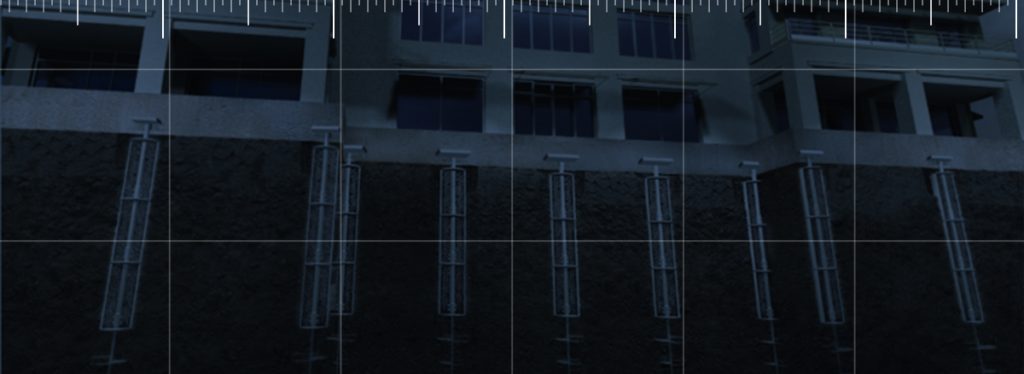A soil nail wall is a gravity composite soil structure in which an excavated slope or vertical cut is internally reinforced through placement of closely spaced linear reinforcing elements. Reinforcing elements are installed by placing them into the existing soil slope or new excavation. Construction is performed in vertical steps, with construction starting at the top of the excavation and proceeding down. Once an excavated level is reinforced with soil nails, a permanent or temporary facing is applied to retain the soil. The resulting soil structure has soil nails placed to a depth and of a sufficient density to ensure it can resist the forces imposed by the soil and surcharge loads. The failure modes that are analyzed to insure stability for a soil nail wall include sliding, bearing, and global stability failure modes.
Advantages of Soil Nails:
- Quicker Installation – Screw anchors can be drilled into the ground in a matter of minutes.
- Immediate Reinforcement – With screw anchors, soil reinforcement is available immediately upon installation. There is no need to wait for grout to cure.
- No Specialized Equipment Required – Screw anchors can be installed using almost any drill motor with sufficient torque output that can be attached to a backhoe, skid loader or trackhoe.
- Screw Anchor Capacity Determined During Installation – The capacity of a screw anchor can be estimated directly from the torque required to install the anchor (Hoyt & Clemence, 1989). This provides immediate feedback to determine if design requirements are being met in the field,and eliminates expensive and time-consuming load tests.
- With the introduction of the SOIL SCREW® Retention Wall System, soil nailing can be performed without the need for specialized equipment and grouting, and it can be performed quicker and more economically.
Brochures:
Manual:

